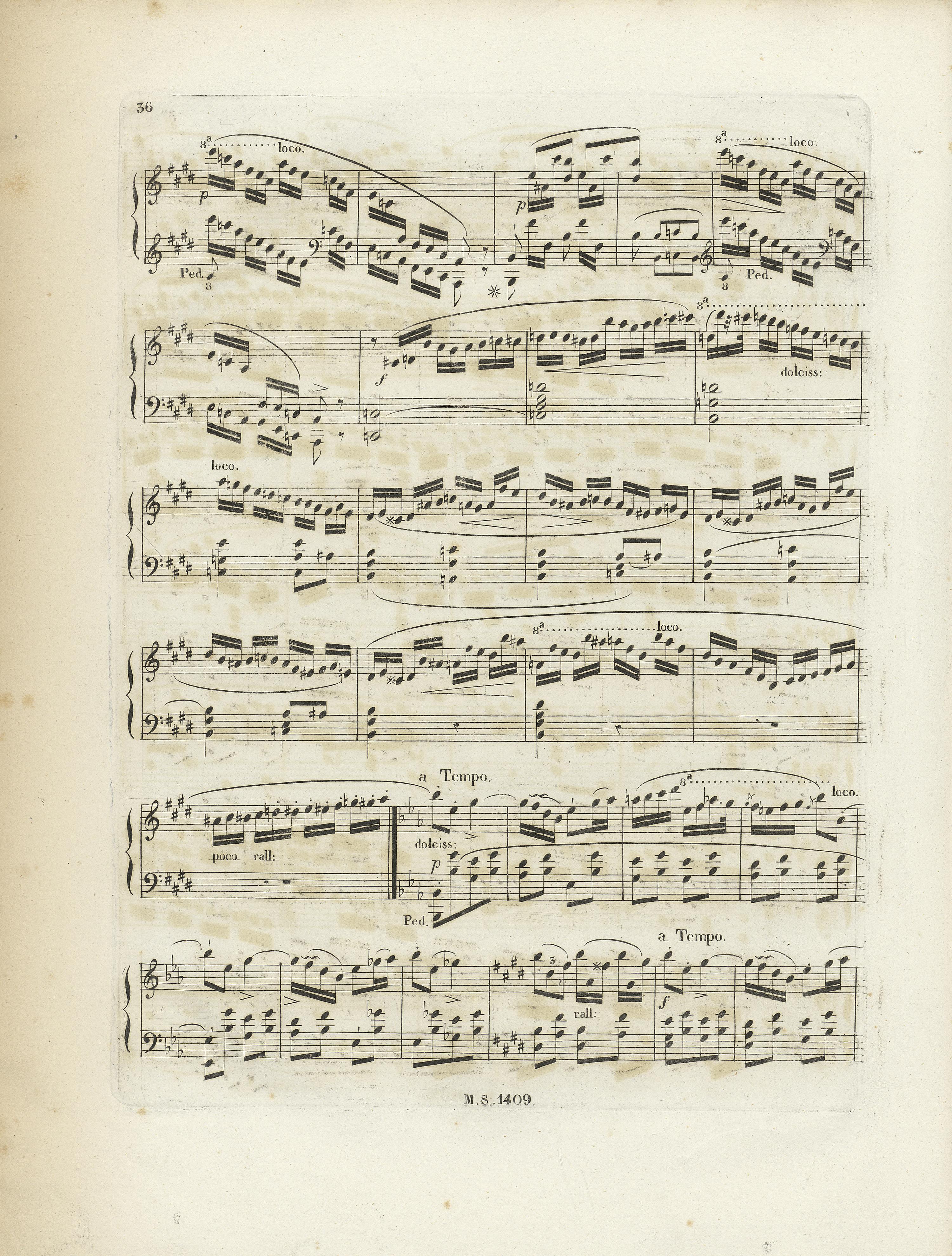



When interpreted literally, the authentic indications of dynamic nature do not create a coherent vision – the dolciss. indication appears in the middle of the bar after 
 in bars 260-261, without noticeable connection to melody, harmony or rhythm. Due to this reason, we suggest adding a
in bars 260-261, without noticeable connection to melody, harmony or rhythm. Due to this reason, we suggest adding a  mark in the main text. However, it is only one of possible interpretations of the original notation – it cannot be excluded that dolciss. should start earlier, i.e. at the beginning of the bar or after the rest. Therefore, it would be an example of the use of the early convention of placing indications within their scope of validity (Chopin would apply it on a number of occasions, particularly in his earlier pieces).
mark in the main text. However, it is only one of possible interpretations of the original notation – it cannot be excluded that dolciss. should start earlier, i.e. at the beginning of the bar or after the rest. Therefore, it would be an example of the use of the early convention of placing indications within their scope of validity (Chopin would apply it on a number of occasions, particularly in his earlier pieces).
Compare the passage in the sources »
category imprint: Interpretations within context; Editorial revisions
issues: Centrally placed marks
notation: Articulation, Accents, Hairpins



